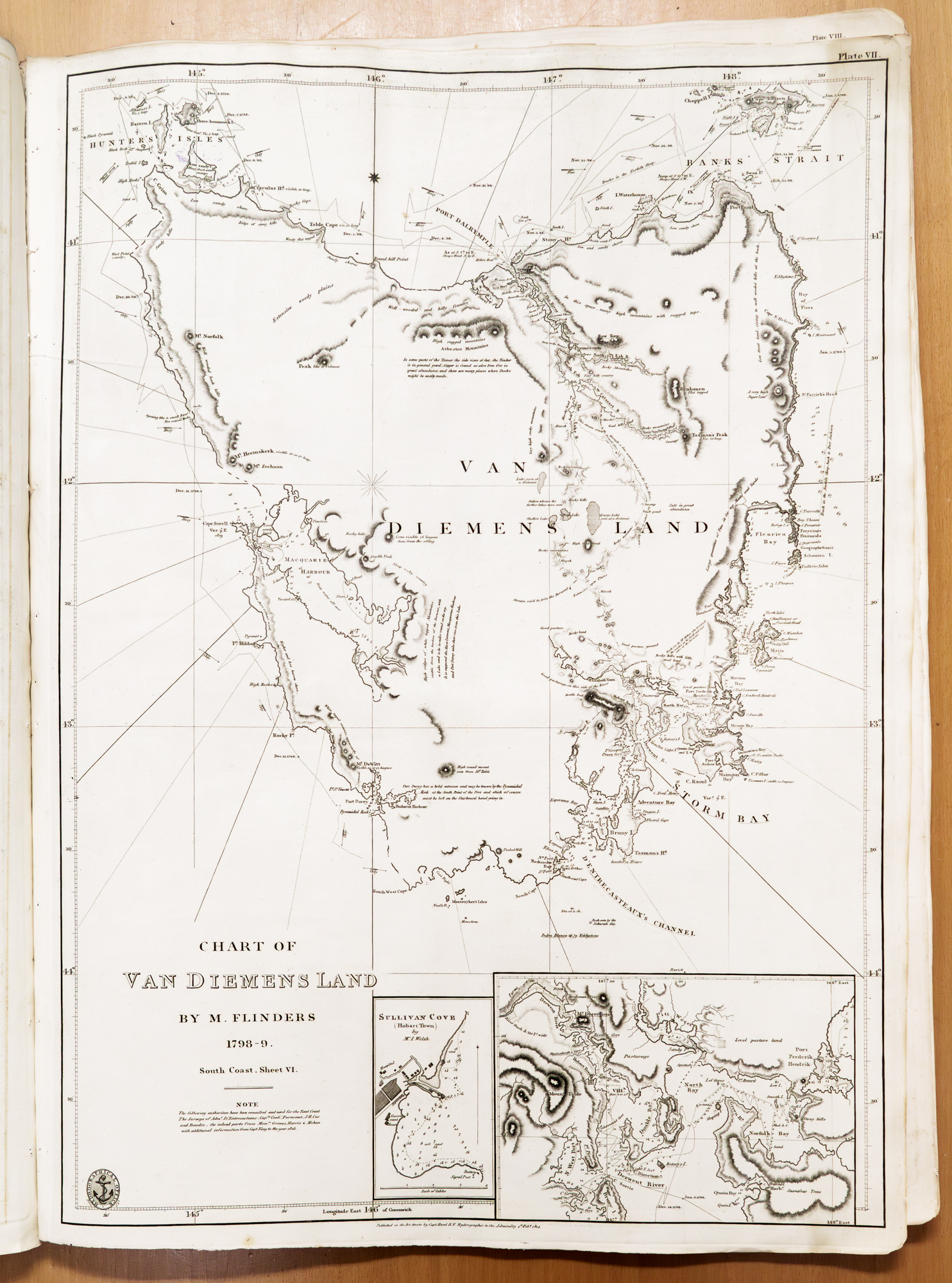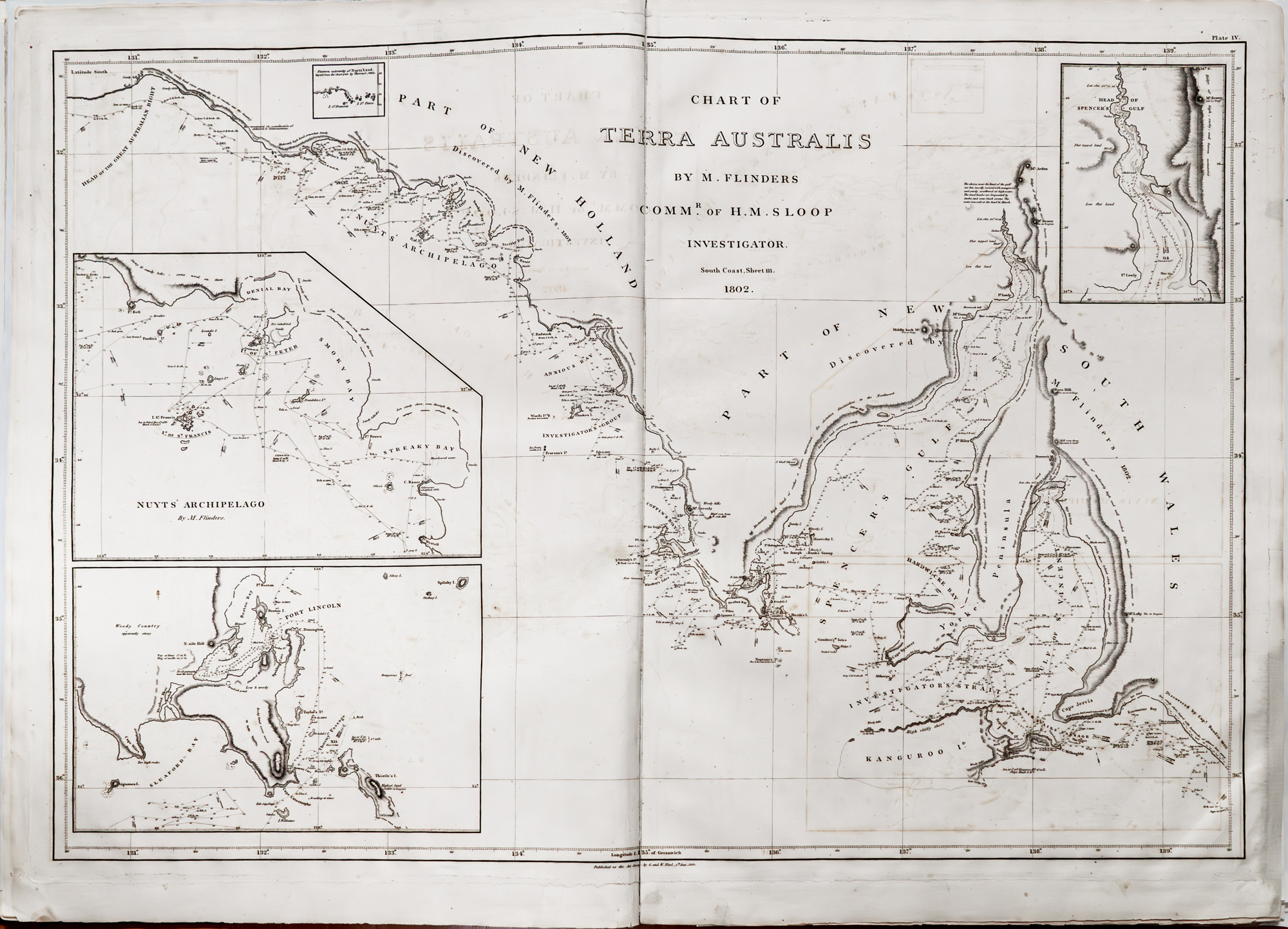The Ships & Voyages of Matthew Flinders
Alert - Matthew Flinders joined the Royal Navy on the muster of Alert on 23rd October 1789 although he never sailed on her.
Scipio - transferred to Scipio in May 1790 and then to Bellerophon as a midshipman.
Providence - 2nd August 1791 to 7th August 1793 - Flinders' first major voyage - sailed with William Bligh on his second breadfruit voyage as a mid shipman.
Bellerophon - fighting the French from November 1793 to June 1794 as aide- de -camp to Admiral William Pasely.
Reliance -voyage to Port Jackson under Captain John Hunter as master's mate - sailed February 1795 arrived Port Jackson September 1795.
Tom Thumb - an 8 foot skiff - with George Bass and 14 year old William Martin -sailed from Port Jackson 29th October 1795 to Botany Bay and explored the Georges River- arrived back early November to Port Jackson.
Reliance - voyage to supply Norfolk Island - sailed from Port Jackson 21st January 1796 with Matthew and Samuel Flinders.
Tom Thumb I I - a 12 foot sailing boat with the same crew - departed Port Jackson 24th March 1796 and sailed as far south as present Woolongong and Lake Illawara. Arrived back at Port Jackson 1st April 1796.
Reliance - sailed from Norfolk Island with Supply and Britannia 25th October 1796 to Cape Town to pick up livestock to supply the settlement at Port Jackson. Reliance and Flinders arrived back 26th June 1797.
Francis - voyage under Capt. William Reed to rescue survivors of the wreck of the Sydney Cove. Left Port Jackson 1st February 1798 and returned 9th March 1798. Flinders was on board as surveyor and map - maker.
Norfolk - the epic voyage in the 25-ton, 35 foot sloop that proved Van Diemen's Land an island and named Bass Strait. Lieutenant Matthew Flinders and George Bass left Port Jackson 7th October 1798 arriving back 11th January 1799.
Norfolk - Flinders was given eight weeks to sail north along the coast of New South Wales and carry out further charting. He left 8th July 1799 and returned 20th August having got as far as the Glasshouse Mountains and Moreton Bay.
Reliance - two short voyages to supply Norfolk Island - completed December 1799.
Reliance - voyage back to England under Captain Henry Waterhouse sailing from Port Jackson 3rd March 1800. Arrived Plymouth 26th August 1800. It was five years since Flinders had been back in England.
Investigator - the historic voyage that included the first circumnavigation of Terra Australis. With Sir Joseph Banks' backing Flinders was commissioned to make the voyage in the Investigator. He was promoted to commander and they set sail on 18 July 1801, sighting Cape Leeuwin on 7th December. They reached Port Jackson on 8th May 1802 having "encountered " Captain Nicholas Baudin in Le Geographe off the coast of what is now South Australia on 8th April 1802. (On board also was Matthew's cousin Midshipman John Franklin later Sir John Franklin).
Investigator - sailed north from Port Jackson 22nd July 1802 to complete the circumnavigation. Reached Thursday Island 2nd November and then sailed around the coast of the Gulf of Carpentaria proving that it did not bisect the continent as some had suggested. The Investigator was in poor condition and many of the crew were sick so they put into Kupang for repairs and supplies. Flinders was concerned that the ship might not get them home and decided their only hope was to sail for Port Jackson as quickly as possible. This they did only stopping for water and food and not charting or collecting specimens along the way .The Investigator arrived back at Port Jackson on 9th June 1803.
Porpoise - Flinders was to return to England as a passenger on the Porpoise and sailed on 10 August 1803 from Port Jackson under the command of Capt. Robert Fowler. Sailing with them were the Cato and Bridgewater. On the night of 17th August Porpoise and Cato struck a reef and were wrecked. Fortunately ninety-four members of the crew were rescued and were able to set up camp on a nearby sand cay.
Flinders then took one of the cutters which had been saved and with thirteen crew members sailed and rowed the nearly 1,100km back to Port Jackson departing 26 August and arriving at 8th September 1803. "Wreck Reef " was named by Flinders and is located off the coast of Townsville.
Cumberland - Governor Gidley King organised a rescue party consisting of Rolla, Francis and Cumberland to sail up the coast to Wreck Reef and rescue the remaining crewmen. As part of this rescue effort Flinders was offered the Cumberland for the return journey back to England. He was none too pleased to be offered such a small ship (29 tons and a crew of only ten plus a captain) for the long journey back to England but accepted thinking it would be the quickest way for him to get home.
Setting sail from Port Jackson on 21st September they arrived at Wreck Reef on 7th October and left shortly thereafter on 11th October having rescued the surviving crewmen and salvaged Flinders maps and journals.
Flinders then sailed north up the east coast and into the Torres Strait where he was able to do some charting. He then put in to Kupang arriving on 10th November. He only stayed four days before resuming his voyage his destination being Cape Town. However the poor condition of the Cumberland and the weather made him decide to put in at Ile de France (Mauritius) on 12th December 1803 where he was detained for six and a half years by the French.
Harriet, Otter and Olympia - Flinders was finally given his release by the French on 28th March 1810. The Harriet was a ship of truce (a cartel) which was to take him back to England via India and they sailed on 13th June 1810 from Port Louis. He then transferred to the Otter which sailed directly to Cape Town. After a wait of some weeks Flinders boarded Olympia on 28th August 1810, which took him on to England where he landed 2nd October 1810 and received a belated promotion to post captain.
Matthew Flinders did not go to sea again and died in London 19th July 1814.
Notes prepared by Hugh Orr

